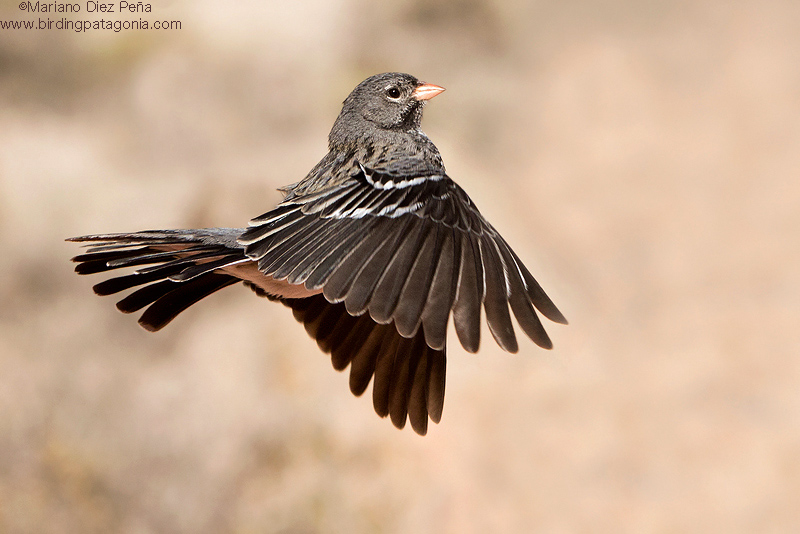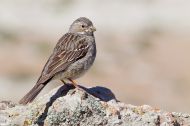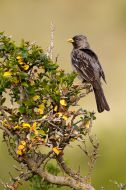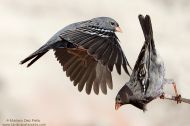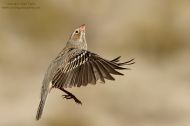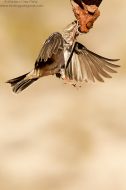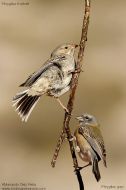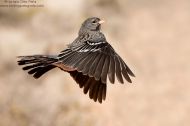Mourning Sierra-Finch
Yal Negro
Phrygilus fruticeti
Length: 195mm. Sexes unlike. Male: bill yellow with reddish tinge; iris dark brown; upper parts of head, hind neck and back plumbeous grey copiously striated with black; lower back and rump evenly plumbeous grey; uppertail coverts plumbeous grey with black streaks; tail feathers black with fine grey margins on upperside and grey terminal bar on underside. Auricular region brownish grey; lores, chin, throat, foreneck and upper breast black; sides of breast, lower breast and flanks plumbeous grey, belly white; undertail coverts grey with feathers margined whitish. Lesser wing coverts plumbeous grey; median and greater coverts black with white terminal bar; remiges black margined with grey. Legs yellow with a chestnut tint.
Average weight: 46.5g.
Female: bill brown above and grey to mandible; upper parts of head, hind neck and back plumbeous grey with blackish striation and feathers margined cinnamon brown; eyebrow whitish, auriculars cinnamon; malar region, chin and throat whitish with dark brown moustache; breast and flanks grey with cinnamon brown streaks; belly white; wings and tail as male but brown instead of black.
The male individuals of eastern Patagonia are separable from the western Patagonia males by the following: upper parts of head and back are grey with blackish streaks and cinnamon brown margins, the black extending only up to the upper breast; wings show greater coverts and remiges margined with pale brown and whitish. In general, they are larger in size.
Juveniles are similar to females and in winter adult males often show greyish brown bills. Habitat and behaviour: it inhabits shrubby fields in arid regions in flocks of varying size, sometimes quite large ones. During the breeding season they split up in pairs that are in contact with other members of the flock. It is very common and often feeds on the ground. The breeding male is quite territorial. It usually sings perched from shrubs or rocks. It flies upwards and then glides downwards while at the same time drawing circles and uttering a song that ends with a whistle; finally it resumes its perch, sometimes the same one it left. The Mourning Sierra-Finch nests among shrubby spiny vegetation, where a large nest is made with roots and grasses, lined inside with soft fibres. Three bluish green eggs with copious cinnamon mottling are laid. Range: from Neuquén and Río Negro to southern Santa Cruz; it does not venture into the forest. The Mourning Sierra-Finch occurs from the ecotone towards the east.
Illustrated Handbook of the Birds of Patagonia
Kindless: Kovacs Family
|








